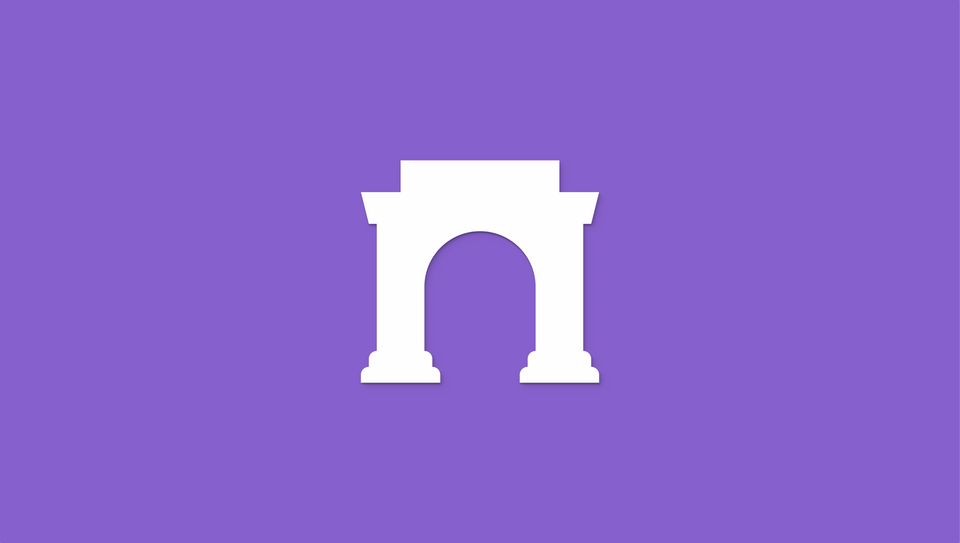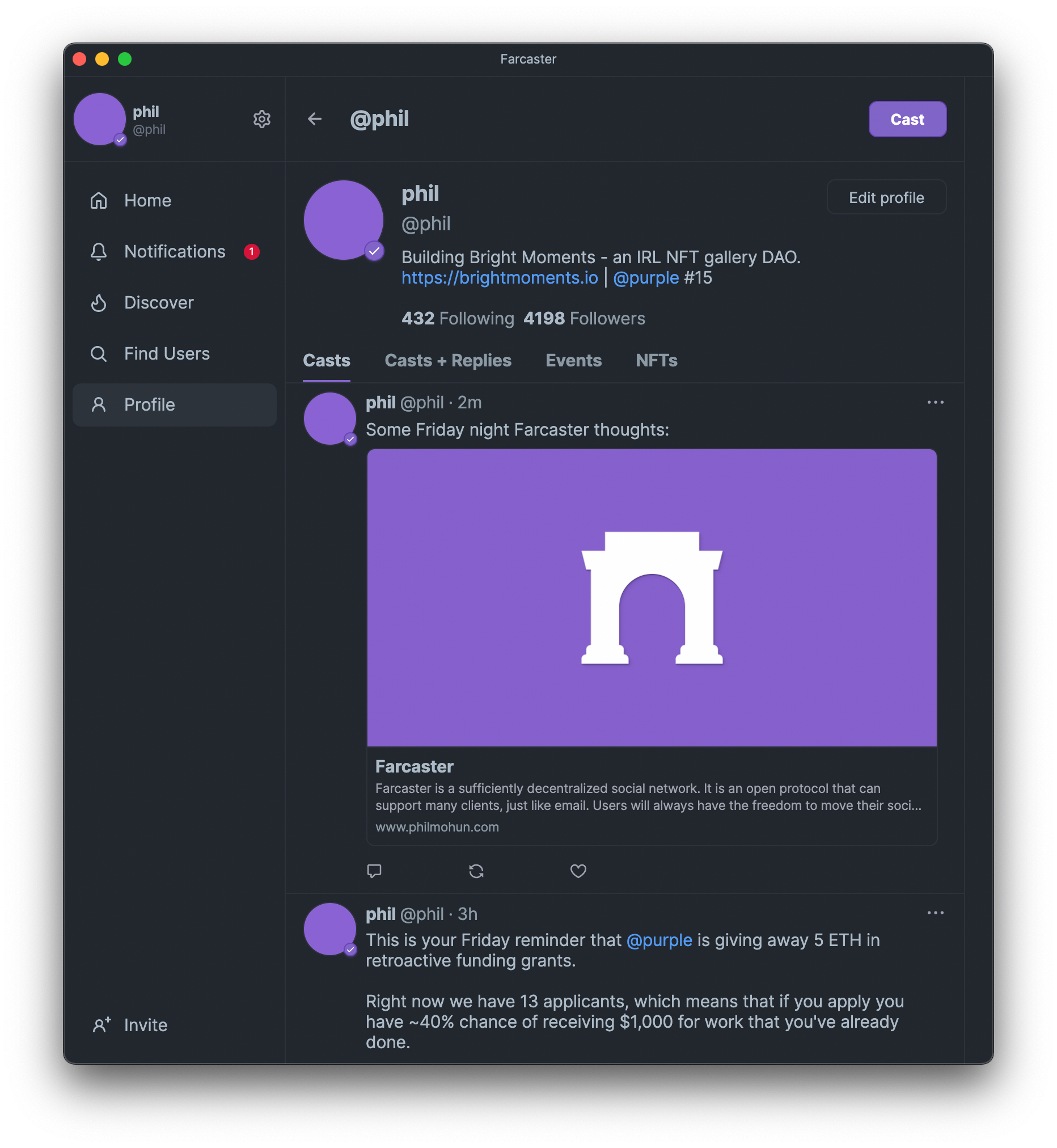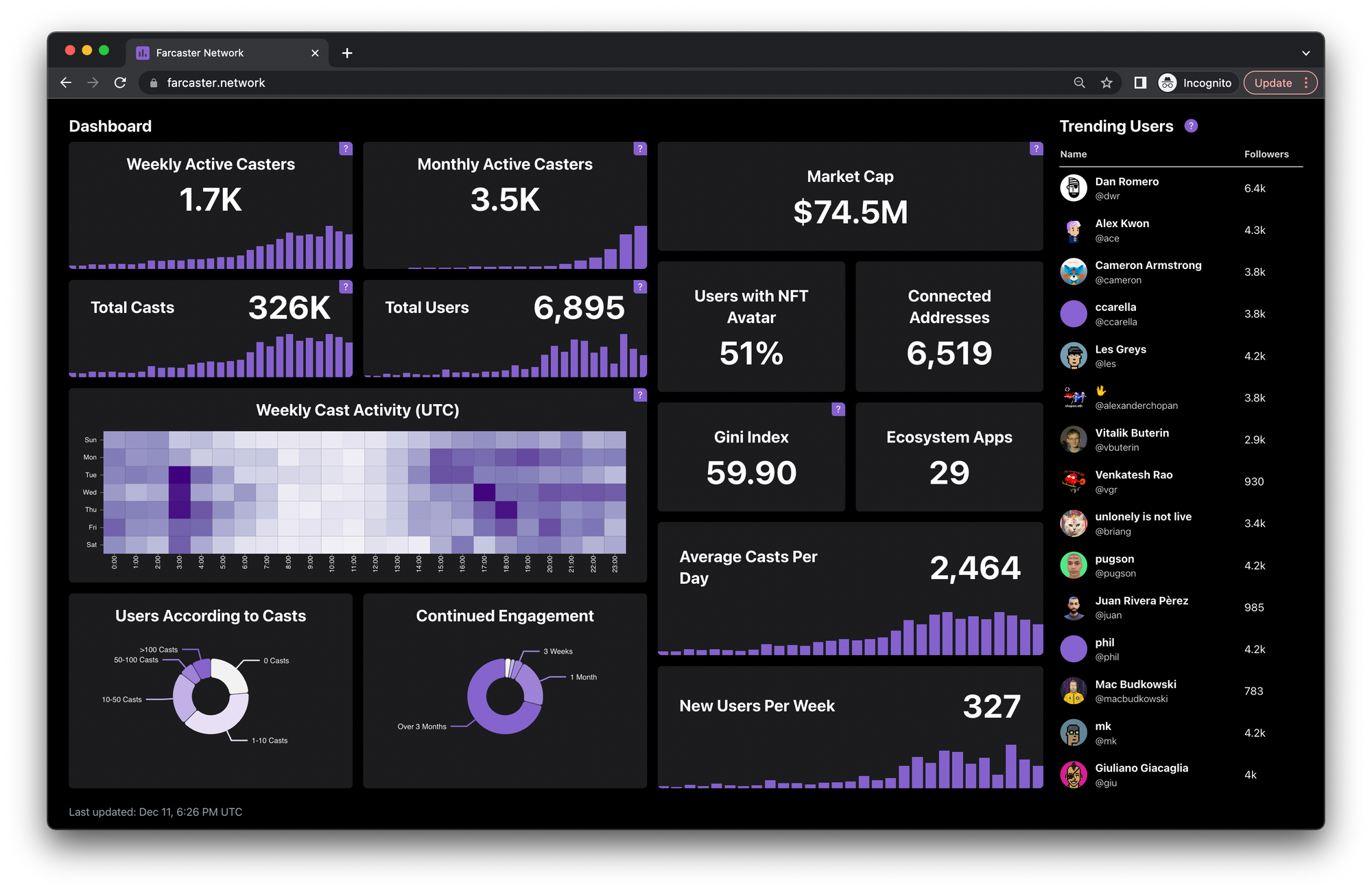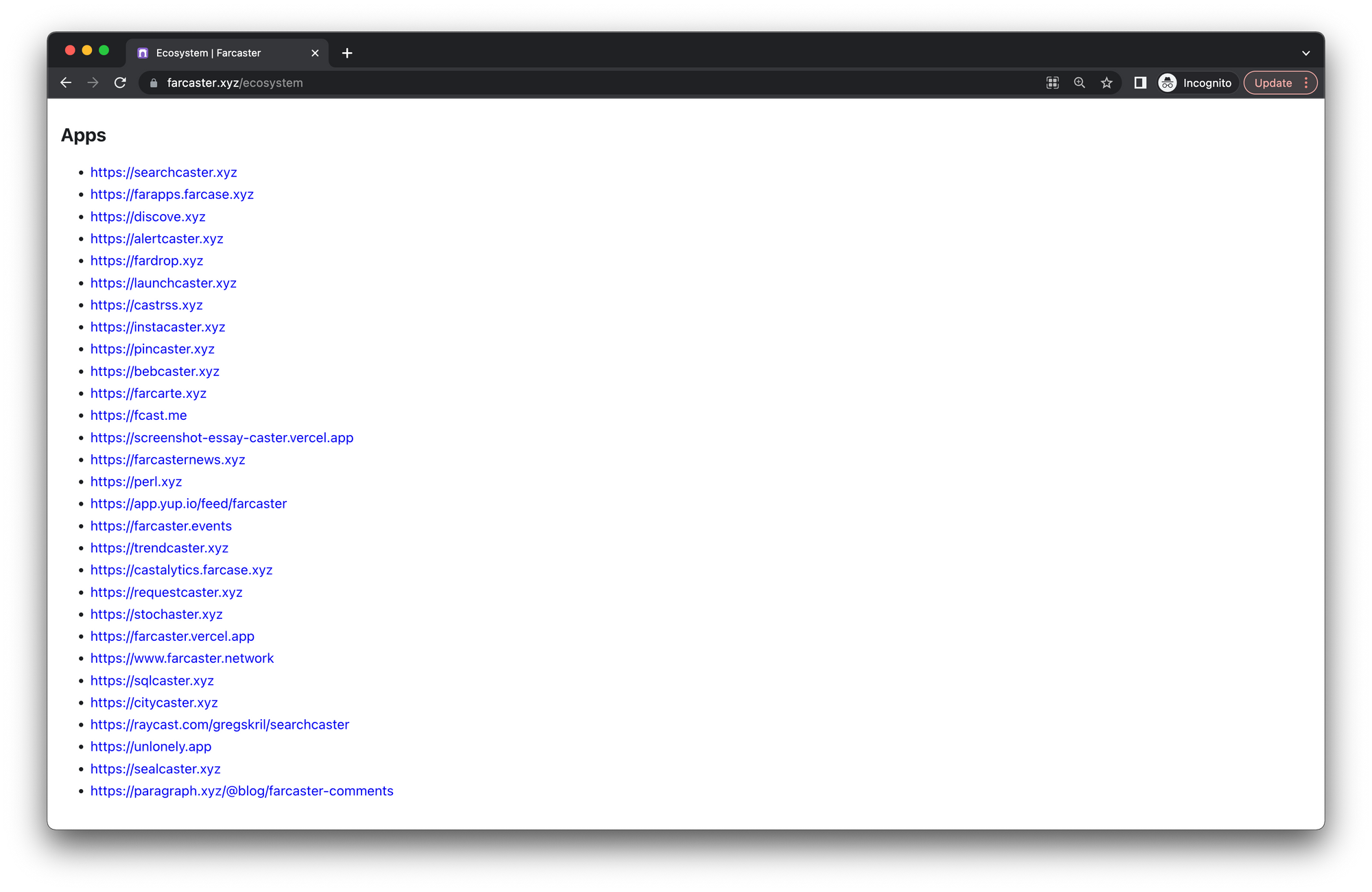Farcaster

Farcaster is a sufficiently decentralized social network. It is an open protocol that can support many clients, just like email.
Users will always have the freedom to move their social identity between applications, and developers will always have the freedom to build applications with new features on the network.
- Farcaster homepage
I'm excited about Farcaster because of the people who are using the protocol. Right now there are about 3,500 monthly casters, many of whom are building adjacent crypto projects and protocols.
Today, nearly every user accesses Farcaster through the app developed by Merkle Manufactory, the founding team behind the protocol. In the future I expect that people will use many different apps to access Farcaster, just like how people can use different email clients to communicate with one another over SMTP.

One of the reasons that Farcaster is so promising is the tight integration with the broader Ethereum ecosystem. The permissionless nature of the blockchain already makes it 10x easier to run certain business functions, including international payments, accounting, and automated contracts.
Having a robust messaging layer integrated into Ethereum opens up a large design space for application developers. Right now, people work around this constraint in ridiculous ways, including changing their usernames on centralized apps, sending financial transactions with text logs, and scraping email addresses from ENS records.
We're already seeing some of this permissionless innovation take place. Anyone can build a decentralized dashboard on top of Farcaster, or a new client, or a bot that replies to casts when summoned. These aren't hypothetical use cases; they already exist and are gaining adoption.
For example, Farcaster.network is a robust alternative to the centralized dashboards that social media companies use to measure the health of their networks. Instead of only being available to the employees of the company, it's publicly visible and built by an independent developer, Greg Skriloff.

Despite only having a few thousand users on the protocol, dozens of apps have already popped up.

There's still a lot to do: it needs to be much easier to read and write to the Farcaster protocol. Hard problems need to be solved around content moderation and spam at scale. Although username subscriptions are promising, protocol level monetization and governance is still unproven.
Despite these challenges, I'm optimistic about the growth of the network. Developer interest is a strong proxy for user adoption, and there's no shortage of builders on Farcaster.